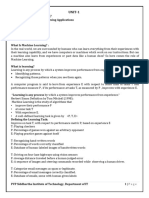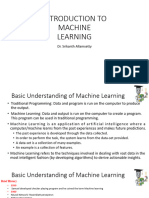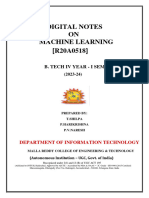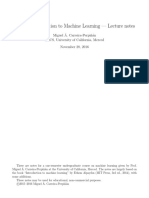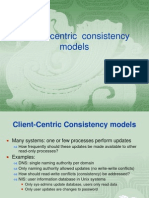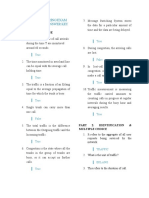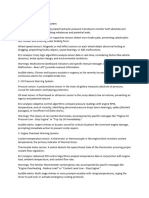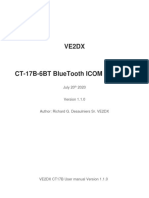0% found this document useful (0 votes)
31 views316 pagesIntroduction To Machine Learning
The document provides an introduction to machine learning, covering mathematical basics, supervised and unsupervised learning, reinforcement learning, and data handling techniques. It discusses various machine learning models, evaluation metrics, and the importance of data quality, including how to manage incomplete and noisy data. Additionally, it outlines the course structure, references, and opportunities in the field of machine learning.
Uploaded by
kanishqchezianCopyright
© © All Rights Reserved
We take content rights seriously. If you suspect this is your content, claim it here.
Available Formats
Download as PPTX, PDF, TXT or read online on Scribd
0% found this document useful (0 votes)
31 views316 pagesIntroduction To Machine Learning
The document provides an introduction to machine learning, covering mathematical basics, supervised and unsupervised learning, reinforcement learning, and data handling techniques. It discusses various machine learning models, evaluation metrics, and the importance of data quality, including how to manage incomplete and noisy data. Additionally, it outlines the course structure, references, and opportunities in the field of machine learning.
Uploaded by
kanishqchezianCopyright
© © All Rights Reserved
We take content rights seriously. If you suspect this is your content, claim it here.
Available Formats
Download as PPTX, PDF, TXT or read online on Scribd
/ 316



























